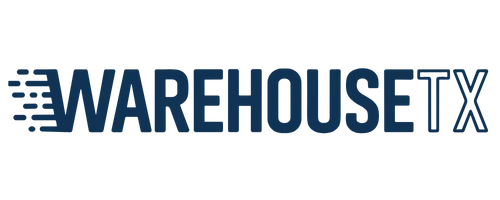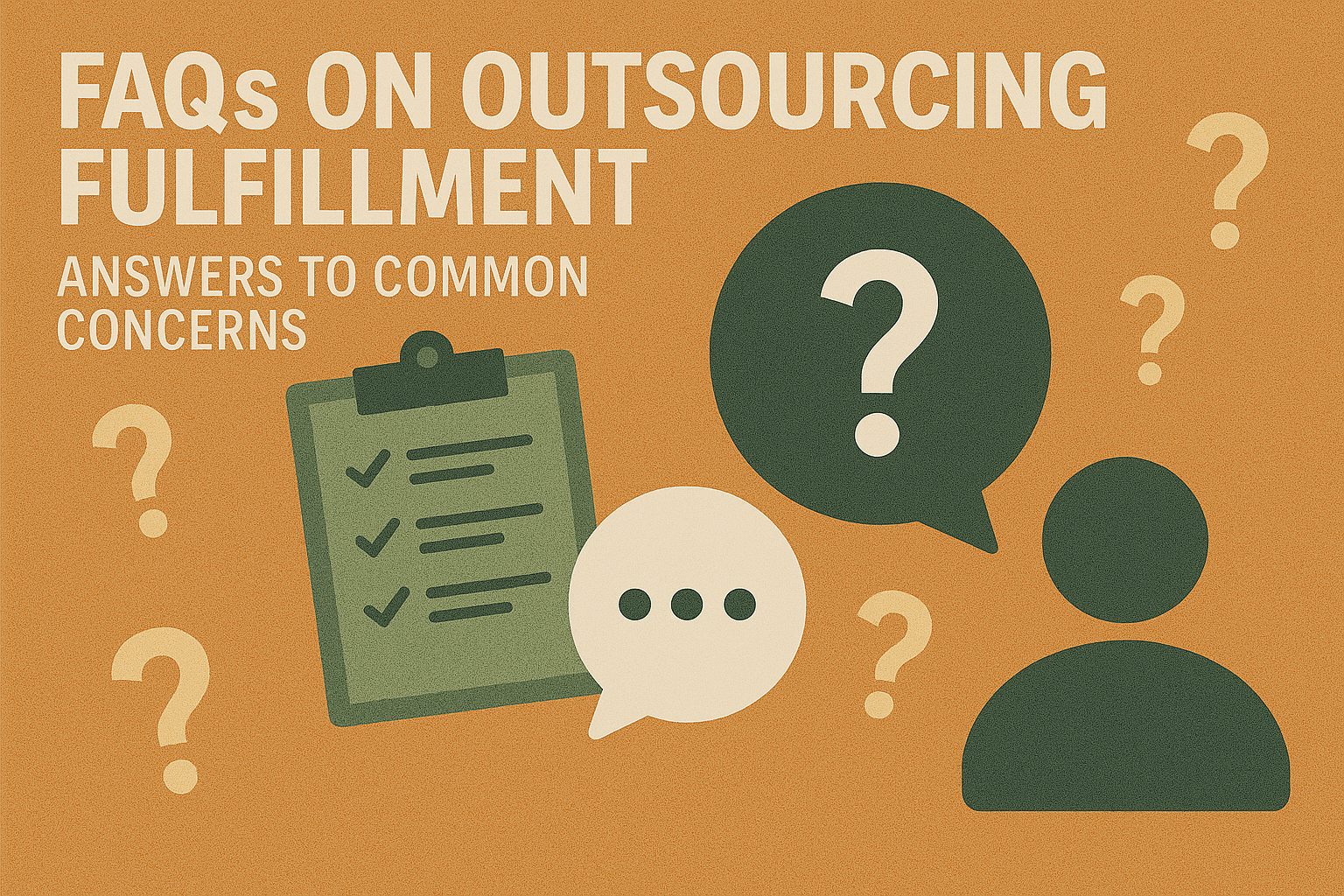Outsourcing Fulfillment FAQs: Expert Answers to Your Common Concerns
Thinking about outsourcing your e-commerce fulfillment? It’s a significant step, often marking a crucial point in a brand’s growth journey. Moving from packing boxes in your garage or back office to trusting a Third-Party Logistics (3PL) provider is a decision that naturally comes with questions – and valid concerns. Will it be too expensive? Will I lose control? Will they care about my customers as much as I do? How will returns be handled? These are questions we hear frequently from businesses exploring a fulfillment partnership.
As specialists in providing fulfillment solutions, we understand these hesitations. The good news is that modern, reputable 3PLs are designed to address these concerns head-on, transforming fulfillment from an operational burden into a strategic advantage. This post tackles some of the most common FAQs and anxieties surrounding outsourcing, providing clear, expert answers to help you make an informed decision for your business.
Concern #1: “Isn’t Outsourcing Fulfillment Really Expensive?”
This is often the first hurdle. While there’s a cost to outsourcing, comparing it accurately to in-house fulfillment reveals a more nuanced picture.
The True Cost of In-House Fulfillment
Many businesses underestimate the full cost of managing fulfillment themselves. Beyond the obvious direct labor, consider:
- Warehouse Space: Rent/mortgage, property taxes, utilities (electricity, heating/cooling, internet), insurance, security. These are often fixed costs, regardless of order volume.
- Labor Overheads: Wages are just the start. Add benefits, payroll taxes, workers’ compensation, training time, recruitment costs, and management overhead.
- Equipment & Supplies: Racking, forklifts (purchase/lease/maintenance), packing stations, computers, printers, boxes, tape, void fill – costs add up.
- Software & Technology: WMS software licenses, integration fees, IT support.
- Shipping Costs: Often paying standard carrier rates without volume discounts.
- Opportunity Cost: Every hour your team spends packing boxes or managing warehouse issues is an hour *not* spent on marketing, product development, or sales.
These costs, many of them fixed, can strain resources, especially during slower periods.
The 3PL Cost Structure: Variable & Predictable
Reputable 3PLs typically operate on a variable cost model based on your usage. Common fees include:
- Receiving: Cost per pallet, carton, or hour to receive and check-in your inventory.
- Storage: Charged per pallet, bin, or cubic/square foot occupied per month.
- Order Fulfillment (Pick & Pack): Often a base fee per order plus a fee per item picked.
- Shipping: Charged based on carrier rates (often discounted) plus potentially a small handling fee.
This model means your costs align more directly with your sales volume – you pay more when you sell more, and less when things are slow, making expenses more predictable.
Economies of Scale: The 3PL Advantage
3PLs achieve cost efficiencies that individual businesses often can’t:
- Discounted Shipping Rates: They ship huge volumes, allowing them to negotiate significant discounts with carriers like FedEx, UPS, USPS, and DHL, which are passed on to you.
- Shared Resources: Costs for warehouse space, equipment, technology, and management are spread across multiple clients.
- Labor Efficiency: Trained staff and optimized processes often lead to higher productivity (units processed per hour) compared to less specialized in-house teams. (Industry resources often discuss 3PL cost models – finding general info on sites like Armstrong & Associates or logistics journals can be helpful).
Concern #2: “Will I Lose Control Over My Brand Experience and Inventory?”
This is a deeply felt concern, especially for brand-conscious founders. Handing over physical operations doesn’t mean losing control entirely; it means shifting how you exercise control.
Maintaining Brand Control
Your 3PL partner should act as an extension of your brand. This is achieved through:
- Custom Packaging Support: Using your branded boxes, tape, tissue paper, or mailers.
- Marketing Inserts: Including your promotional flyers, thank-you notes, or samples in outgoing orders.
- Branded Packing Slips: Ensuring packing slips feature your logo and messaging.
- Clear Instructions: Providing detailed instructions (Standard Operating Procedures – SOPs) on how you want items packed and presented.
A good 3PL partnership involves collaboration to ensure the customer experience reflects your brand standards.
Inventory Visibility Through Technology
You don’t lose sight of your stock. Modern 3PLs provide access to sophisticated Warehouse Management System (WMS) portals, offering real-time visibility into:
- Inventory Levels: See exactly how much stock you have for each SKU across all warehouse storage locations.
- Inbound Status: Track incoming inventory shipments as they are received.
- Order Status: Monitor orders as they move through picking, packing, and shipping.
- Shipment Tracking: Access tracking numbers for shipped orders.
- Reporting: Generate reports on inventory velocity, stock levels, order accuracy, etc.
This technology provides data-driven control and transparency.
Control Through Partnership & SLAs
Control is also maintained through clear communication and agreements:
- Service Level Agreements (SLAs): Formal agreements defining performance expectations (e.g., order turnaround time, receiving time, inventory accuracy).
- Regular Communication: Scheduled check-ins with your dedicated account manager.
- Reporting & Reviews: Periodic business reviews (QBRs) to discuss performance, forecasts, and opportunities for improvement.
Concern #3: “Will a 3PL Care About Quality and Accuracy Like I Do?”
It’s true, no one is as passionate about your business as you are. However, a professional 3PL’s entire business model depends on providing high-quality, accurate service.
Specialization Breeds Excellence
Fulfillment *is* their core competency. They invest heavily in:
- Optimized Processes: Streamlined workflows for receiving, putaway, picking (using technologies like barcode scanning, pick-to-light), packing, and shipping designed for maximum accuracy and efficiency.
- Staff Training: Rigorous training programs focused on specific tasks and quality standards.
- Technology: WMS systems with built-in checks and balances to minimize errors.
Standardized Processes & Quality Control
Accuracy isn’t left to chance. Common QC measures include:
- Receiving Checks: Verifying counts and condition of incoming inventory against packing lists/ASNs.
- Picking Verification: Barcode scanning of locations and items ensures the correct product is picked.
- Packing Validation: Weight checks or secondary scans at the packing station can catch errors before sealing the box.
Performance Metrics & Accountability
Reputable 3PLs meticulously track their performance on key metrics like order accuracy, inventory accuracy, and on-time shipping. These metrics are typically reported to clients regularly and are tied to the SLAs, ensuring accountability.
Concern #4: “Can a 3PL Handle My Growth and Peak Season Volume?”
This is actually one of the *primary reasons* businesses choose to outsource!
Built for Fluctuation
3PLs are inherently designed for scalability:
- Flexible Space: Operating large facilities allows them to allocate more space to clients during peak inventory periods and less during slower times. Access their network of efficient fulfillment centers.
- Scalable Labor: They utilize sophisticated labor planning and relationships with staffing agencies to quickly scale their trained workforce up or down based on collective client forecasts.
- Robust Systems: Their WMS and operational infrastructure are built to handle significant volume spikes without breaking down.
Peak Season Expertise
Handling Q4 is a core capability. They proactively plan months in advance, coordinating labor, space, and carrier capacity based on client forecasts. This expertise allows businesses to navigate peak season smoothly without the massive internal scramble often required for self-fulfillment.
Concern #5: “How Does Outsourcing Handle Complicated Returns?”
Returns (reverse logistics) are a critical, often complex part of e-commerce.
Dedicated Returns Processing
A good 3PL doesn’t just stuff returns in a corner. They have defined processes:
- Efficient Receiving: Quickly processing incoming return packages and identifying them via RMA numbers.
- Thorough Inspection & Grading: Following client-defined rules to inspect the item’s condition (new, damaged, used) and completeness.
- Smart Disposition: Routing items based on grade and rules – back to stock, to refurbishment, to liquidation channels, or for disposal/recycling.
This systematic approach is crucial for efficient return management and maximizing value recovery.
Seamless Integration
Information flows back into the WMS. When an item is inspected and approved for restocking, it becomes visible and available for sale again in your inventory system quickly. Data on return reasons can also be captured and reported back to you.
Concern #6: “Is Integrating My Online Store Difficult?”
In 2025, technology integration is generally much smoother than businesses fear.
- Pre-Built Connectors: Most established 3PLs have pre-built integrations (APIs or dedicated apps) for major e-commerce platforms (Shopify, BigCommerce, WooCommerce, Magento, Amazon, Walmart Marketplace, etc.). Setup is often straightforward.
- API Access: For custom platforms or unique needs, 3PLs typically offer robust Application Programming Interfaces (APIs) allowing your developers to build custom connections.
- 3PL Support: The 3PL’s IT or onboarding team usually guides you through the integration process and provides technical support.
Concern #7: “How Do I Choose the *Right* Fulfillment Partner?”
This is crucial. Not all 3PLs are created equal.
- Key Criteria: Assess their location(s) relative to your needs, technology platform (WMS features, integration ease), experience with your specific product type/industry, proven ability to scale, communication style and support structure, pricing transparency, and overall cultural fit.
- Due Diligence: Ask for client references (and call them!), request detailed performance metrics, understand their SLAs clearly, review contracts carefully, and conduct a site visit if feasible.
Choosing a true partner, not just a vendor, is key to long-term success.
Conclusion: Addressing Concerns, Unlocking Growth
Outsourcing fulfillment is a significant strategic decision, and it’s wise to approach it with thoughtful questions and concerns. As we’ve explored, many common anxieties about cost, control, quality, and scalability can be effectively addressed by partnering with a modern, capable 3PL provider. The right partnership shifts fulfillment from a potential bottleneck and cost center into a streamlined, scalable operation that supports growth.
By leveraging a 3PL’s economies of scale, specialized expertise, advanced technology, and flexible resources, businesses can often achieve lower overall logistics costs, faster delivery times, improved accuracy, and gain back invaluable time to focus on building their brand and delighting their customers. Don’t let unanswered questions hold you back from exploring this powerful growth strategy.
Still have questions or specific concerns about outsourcing? We encourage you to reach out. The team at WarehouseTX is happy to provide a personalized consultation to discuss how our network of fulfillment centers and expert services can address your unique needs.
Frequently Asked Questions (FAQ) Summary: Outsourcing Fulfillment
Q1: What are the main costs involved in outsourced fulfillment?
A: Typical costs include fees for receiving inventory, monthly storage (per pallet/bin/location), order fulfillment (often per order + per item picked), packing materials (or using client-supplied), and outbound shipping costs (based on discounted carrier rates).
Q2: How do I maintain brand control when using a 3PL?
A: You maintain control through clear instructions (SOPs) and partnership. Reputable 3PLs support using your custom-branded boxes, tape, and marketing inserts. You also maintain visibility and control through the WMS portal, regular communication, and performance reviews based on agreed-upon Service Level Agreements (SLAs).
Q3: How scalable is outsourced fulfillment for handling growth or peak seasons?
A: Highly scalable. This is a core advantage of outsourcing. 3PLs leverage large facilities and flexible labor pools managed through sophisticated planning. They are built to handle significant fluctuations in order volume and inventory levels, allowing your business to grow or manage seasonal peaks without massive internal investments in fixed space or temporary staff.
Q4: How does a 3PL ensure order accuracy?
A: Accuracy is achieved through a combination of trained staff, optimized processes, technology, and quality control checks. This often includes barcode scanning verification during picking, weight checks or secondary scans at packing stations, clear slotting strategies in the warehouse, and performance tracking against accuracy metrics defined in SLAs.
Q5: What are the most important things to look for when choosing a 3PL partner?
A: Key factors include: strategic location(s) relevant to your needs, robust and user-friendly technology (WMS/integrations), proven experience handling your product type and order volume, demonstrated ability to scale, transparent and understandable pricing, strong communication and support structures, and a collaborative partnership approach that feels like a good fit for your company culture.

